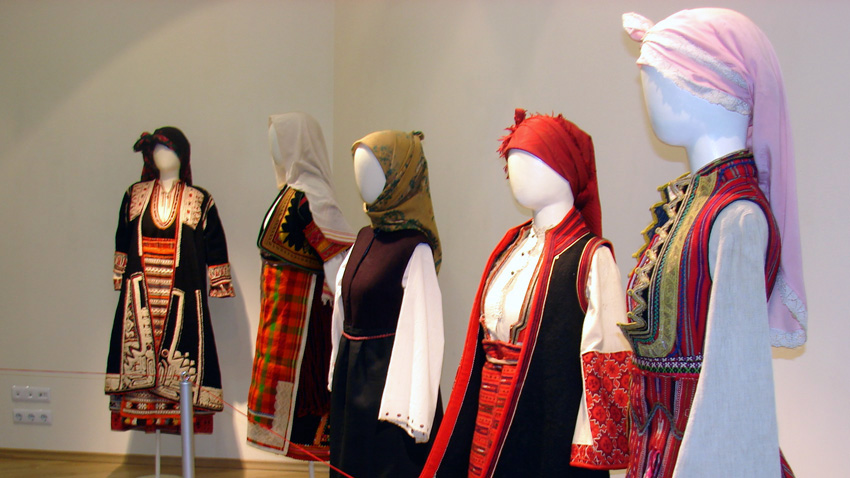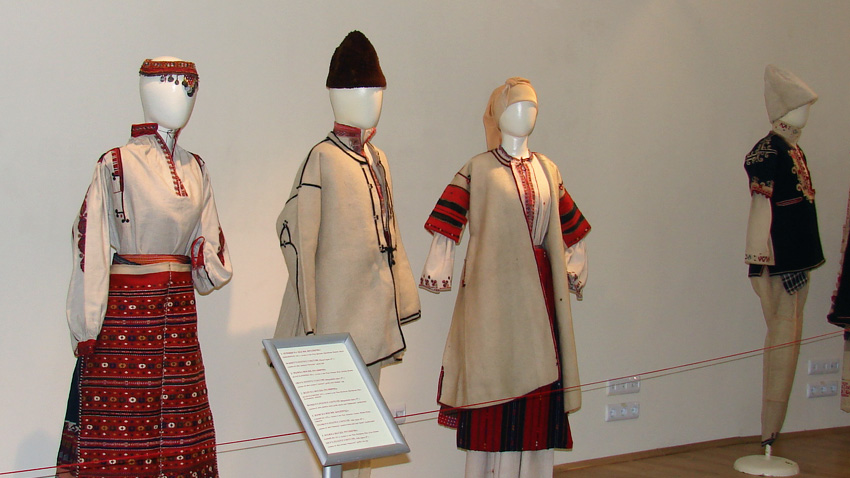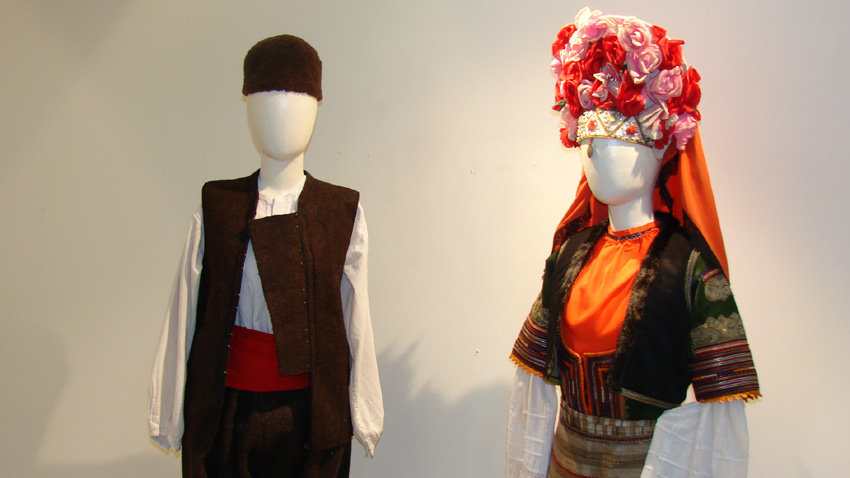Richly decorated men's and women's wedding attire in combination with jewellery, ornate belt buckles, aprons and belts are on display at the “Traditional national costumes” exhibition in Bourgas on the Black Sea, evoking a huge amount of interest.
The authentic exhibits coming from different parts of Bulgaria were donated by the Bulgarian Academy of Sciences' Institute for Ethnology and Folklore Studies with Ethnographic Museum. A pageant of traditional costumes to the sound of folk music was organized at the opening of the exhibition.

Here is more about the event from Anelia Kazakova from Bourgas municipality:
“The Marine Casino cultural centre devoted six weeks to the beauty of traditional Bulgarian clothes. The exhibition showcases the beauty and diversity of traditional garments that go back centuries. For example, the traditional costumes on show here are 150 years old. There are men's and women's items of clothing from different folklore regions - from the Shoppe region, from Dobroudja, Pirin, Thrace, the Rhodopes, the region of Moesia. I would like to make mention of a wedding dress from the region of Kyustendil, a costume from the National Revival period from Zheravna, traditional women's clothing from the Bulgarian community in Bessarabia.”

Anelia Kazakova adds that the idea is to bring people in touch with history and tradition and pass them on to the coming generations.
Visitors marvel at the array of accessories - bodices, belts, belt buckles, bracelets, stockings, slippers, leather shoes and boots from Burdarski Geran village near Byala Slatina, but also pattens for city dwellers and the calfskin tsurvouli (traditional village shoes without soles, laced up to the knee) that are more than 150 years old. One of the costumes from Sofia goes with a pinafore plus gloves.

Traditional clothing has a deep meaning, indicating the social standing as well as the age of the woman. Older women would dress in darker clothes - black or maroon for example, while head scarves had to be plain, in just one colour. Young girls, on the other hand wore an array of colours as well as embroidery. According to tradition, while they were sewing and embroidering their clothes, women would invariably leave some element unfinished in their shirt, apron or skirt. It was believed that this warded off evil.
English version: Milena Daynova
Five former students in Prof. Andrey Daniel's class gather on his birthday to continue a conversation they once started in the 51st studio of the National Academy of Arts. "Thoughts in Material" is the title of the exhibition..
T he exhibition "Mount Athos in Drawings and Photographs" opens tonight at the Bulgarian Cultural Institute in Berlin . The authors are the artist Andrey Yanev and the professor of art semiotics Miroslav Dachev. Admission is free, the institute said...
What would be the motivation in times of political crises, wars, migrant pressure and an unclear future to dream of a unified European university for film and media? An educated and cultured nation is much more difficult to manipulate..
A thirty-six-hour theater and film marathon will be presented to audiences in Sofia by the students of the National Academy for Theatre and Film Arts..
With Rosencrantz and Guildenstern Are Dead , young Boyan Kracholov - one of the most compelling contemporary Bulgarian theatre directors - makes his debut..

+359 2 9336 661
